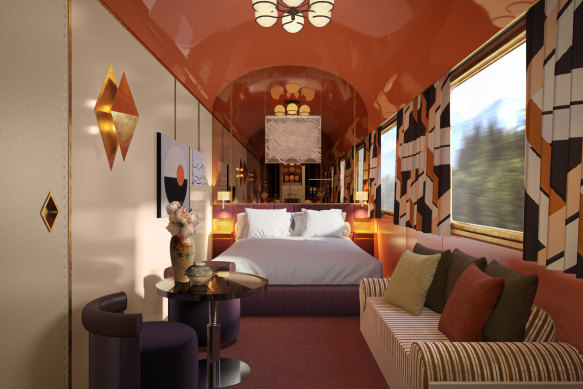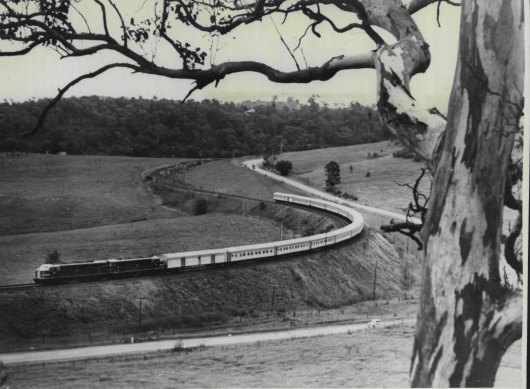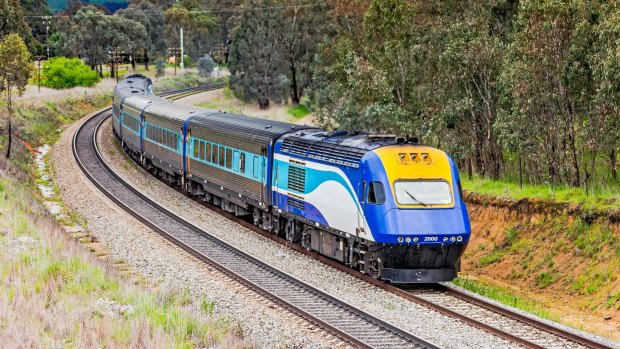By Tony Wright
We’d be lacking imagination if the idea of travelling through the night snugged down in a sleeping berth on a night train didn’t attract us as at least a bit alluring.
The romance of the Orient Express floats to mind.

Classic rail luxury reimagined for Accor’s new Orient Express in Italy.
Champagne and dressing in formal evening attire for a splendid meal in the dining car, the night’s slumber soothed by the clickety-clack of wheels on rails, a steward delivering a pot of tea and toast to your compartment in the morning … here, surely, was old-time bliss.
Few sleeper trains are likely to equal the luxury of the Orient Express these days, of course. Rare, truly grand trains still offer something of the experience, but they are multi-day affairs, where the journey is more important than the destination; holidays by rail.
In the 21st century, however, slightly humbler sleepers for overnight commuting are increasingly popular, particularly in Europe.
There are good reasons.
Travellers can go to sleep in one city and wake in the centre of another, the fare often less than what otherwise would have been required for a night in a hotel.
More to the point, such commuters do not have to go through the increasingly soul-destroying business of finding their way to an airport an hour or so before their flight, only to line up with multitudes at security, and even when their flight is done (assuming it is on time), having to find their way from the airport to their destination.
A few months ago, I was blessed enough to realise a long-held desire to travel from London to Scotland aboard the train named The Caledonian Express.
It leaves London’s Euston Station and you can choose to travel to Glasgow or Edinburgh, or on to the highlands. Carriages are uncoupled and switched during the night to ensure you reach your chosen destination.
A cabin came with a miniature en suite and priority seating in the dining lounge, where late night drinks – Scotch, naturally – could be had with a “traditional” meal involving haggis, and where my daughter and I enjoyed breakfast as the morning landscape rolled by.
The Caledonian Express is far from cheap (though a British fast-train ticket and a night in a decent hotel in London would have cost more), yet its sleepers are so in demand we needed to book almost a year ahead to guarantee our bunks.
It might seem astonishing that Australia’s public transport strategists haven’t properly awoken to the potential of inter-city sleeper trains, particularly between Melbourne to Sydney – astonishing, that is, if it were not for the fact that decision makers have allowed rail travel in Australia to become a shabby also-ran to air and road travel over recent decades.
It is galling to recall that for a quarter-century from 1962 one of the world’s great luxury sleeper trains, the Southern Aurora, ran between Melbourne and Sydney, its conductors serving passengers dinner on white napery in the dining car and breakfast in bed. Why, you could put out your shoes and have them returned to a little cubby in your cabin during the night, perfectly polished.

The Southern Aurora in 1962, one of the world’s great sleeper trains at the time. Credit: The Age
The ensuing dream of a Very Fast Train hurtling between the cities of Australia’s east coast has, of course, faded to little but a mirage since the late 1990s, when treasurer Paul Keating and later the Hawke government cabinet refused to provide tax concessions to get such a project off the ground.
Even so, the existing, meandering train line between Melbourne and Sydney is perfectly capable of carrying passengers overnight, and does so with the outdated XPT, introduced in 1982.
Tourists from Europe and Asia – many of whom would, naturally, imagine a fast train over a distance like Sydney to Melbourne or vice versa would be the way to travel, just as it is in their home countries – must find themselves startled to be confronted with the XPT.
And yet, the old thing has a few sleeper berths, as my colleague Liam Mannix explained recently.
They have become so popular you need to book ahead several months if you are to secure a berth.
This is despite the XPT lacking WiFi or charging ports, with phone reception all but useless on long stretches and a travel time that is more than 10 times that of a jet flight between the two cities.
The XPT, happily, is reaching the end of its life on the line.

XPT trains were introduced on the Sydney to Melbourne line in 1982.Credit: iStock
In 2019, the NSW government of Liberal premier Gladys Berejiklian signed a contract for a new fleet of Spanish-built trains to replace the XPT.
You might imagine that given the popularity of the XPT’s sleepers, the new trains would boast a line of fine modern carriages devoted to those who’d be happy to pay to slumber their way between Australia’s two biggest cities.
You’d be wrong.
The contract – which naturally, has since faced cost blow-outs and delays – doesn’t include replacement sleeper carriages. Unless decision makers get an unlikely shot of last-minute wisdom, passengers will sit for the entire journey.
Perhaps we shouldn’t be surprised.
Back in 1895, Mark Twain discovered in the middle of a cold night that he had to change trains in Albury because Victoria and NSW operated separate rail gauges (a stupefying folly that lasted until 1962).
“What paralysis of intellect gave that idea birth?” Twain demanded to know.
Quite.
Get a weekly wrap of views that will challenge, champion and inform your own. Sign up for our Opinion newsletter.